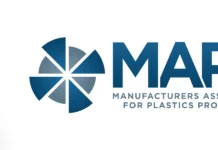by Troy Nix, MAPP
Nearly nine out of 10 plastics processing executives are expecting their 2014 sales trends to increase over the next twelve months, according to MAPP’s most recent survey on the state of industry’s economic conditions. Up 13 percentage points from last year, this 12-month outlook is the strongest ever recorded in any of MAPP’s previously published business forecast surveys. A mere two percent of the 150 executives who provided input during the survey process feel that their businesses will shrink, and 11 percent believe sales will be flat for 2014.
Fueling the optimism for expansion, plastics processing executives highlighted their expectations for the highest growth markets, which included the automotive, medical and consumer goods sectors.
Automotive sector optimism was supported by the development of new automotive platforms and an anticipated overall increase in vehicle production volumes to near 16.5 million units. Many expressed both recent and substantial increases in quoting volumes and, in general, possessed an overall sentiment that the automotive marketplace still is recovering from pre-recession levels and has a great deal of pent-up demand.
The more surprising sector highlighted by executives was the consumer goods segment. Predominate reasons for growth in this sector included feelings that the overall economy is improving and that business is coming back to the US from overseas. Many cited new tooling orders, recently awarded business and a trend in steady growth as keys to their optimistic view points.
The data points compiled on the continuing fight to retain and regain business from overseas competitors were probably the most dramatic of all survey findings. Documented as the largest increase since MAPP began recording information on gains or losses of business to foreign businesses, 34 percent of this survey’s respondents indicated that they acquired work from overseas suppliers in the fourth quarter of 2013, which represents a twenty-four point increase from last year’s survey. In addition, survey results also reveal that fewer American processors (four percent in total) lost business to their overseas counterparts, while two percent indicated losing work because customers actually relocated operations outside of the US.
Although the overall outlook for growth and sales expansion is very optimistic for 2014, plastics manufacturing executives continue to face a wide variety of both external and internal challenges. The availability of a skilled and able-bodied workforce was identified as the top issue facing the vast majority of all business leaders. The absence of technically inclined people, combined with the challenges in finding individuals who want to work, is an ever-present obstacle to improving business operations. Leading executives working to resolve this issue now ensure dedicated resources and planning efforts are included in their annual business strategies.
Second on the list of top challenges for processors in 2014 is a focus on sales revenue, with a bit of a twist. As most businesses deal with the need for diversity and new revenue sources, the need to manage and control rapid growth is the new processing challenge that has surfaced. About half of the processors who listed sales revenue as a primary concern now are faced with a great number of business opportunities and, in some cases, more opportunities that they actually can handle. Those caught in this uptick in the new business sales cycle are in need of increased production capacity, more people, better resource planning tools, more facility space and more cash. Although somewhat counterintuitive, rapid sales growth oftentimes can lead to catastrophic business failure more quickly than a slow deterioration of the top line.
Included in the list of the top challenges identified by processors is the need for operational improvements, which encompassed the need to better contain and control costs, the need for more aggressive waste reduction activities and the need to more aggressively integrate and adopt continuous improvement efforts to improve efficiencies.
Rounding out the list were increased government regulations and the impact those policies have on conducting business. This category contained concerns about the Affordable Care Act, increased taxation and the regulatory environment as a whole.
MAPP’s full business forecast report contains information on 4th quarter performance and 2014 forecast data on employment levels, sales trends, procurement of production tooling, profitability trends and more. To obtain a copy of this report, visit the Publications tab at www.mappinc.com.




